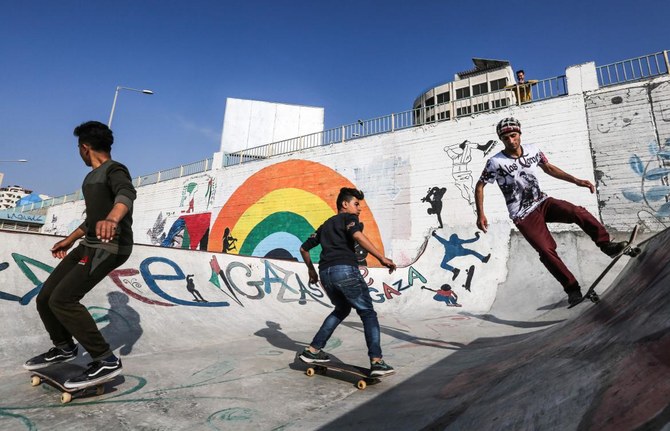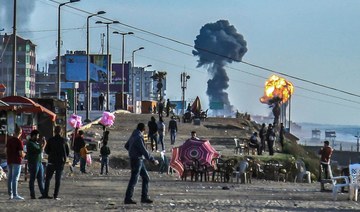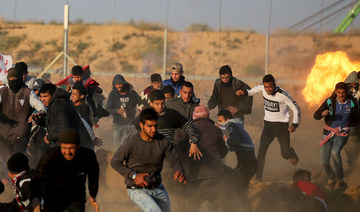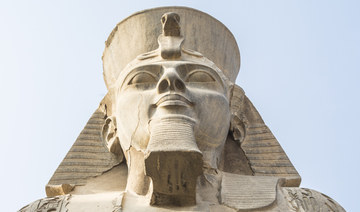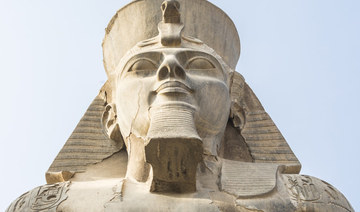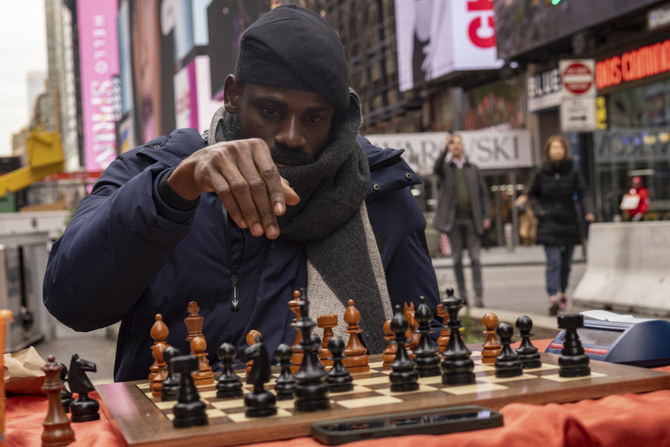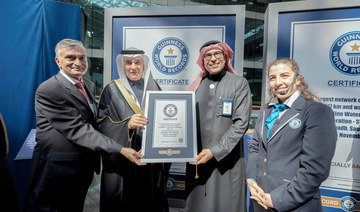GAZA CITY, Palestinian Territories: Gaza City is a noisy place: street vendors holler and drivers blare their horns incessantly, but at the city’s port an unfamiliar sound can be heard — the rumble, grind and clatter of skateboards.
The ramps and ledges a few hundred meters (yards) from the sea may not look like much, but they make up the first and only full skate park in the Palestinian enclave.
The young men that come most days say it provides them a rare opportunity for fun in Gaza, hemmed in physically by an Israeli blockade and mentally by a conservative culture.
On a recent evening, around a dozen young men were rattling forward and back, perfecting new tricks.
Rajab Reefi, 23, appeared to be the team’s leader. He is officially a builder, but there isn’t much work around due to Gaza’s stagnant economy.
Wearing a cap and looking more skater-bro than Muslim Brotherhood, he said the park is an oasis from the stresses of Gazan life.
“We love skateboarding but more than that we love to live,” he told AFP.
“We don’t just want to play here, we want to go from this place to international competitions to show the Western world that Palestinians, and us in Gaza, don’t live just war and destruction.”
“We live for freedom, even though we are under a blockade.”
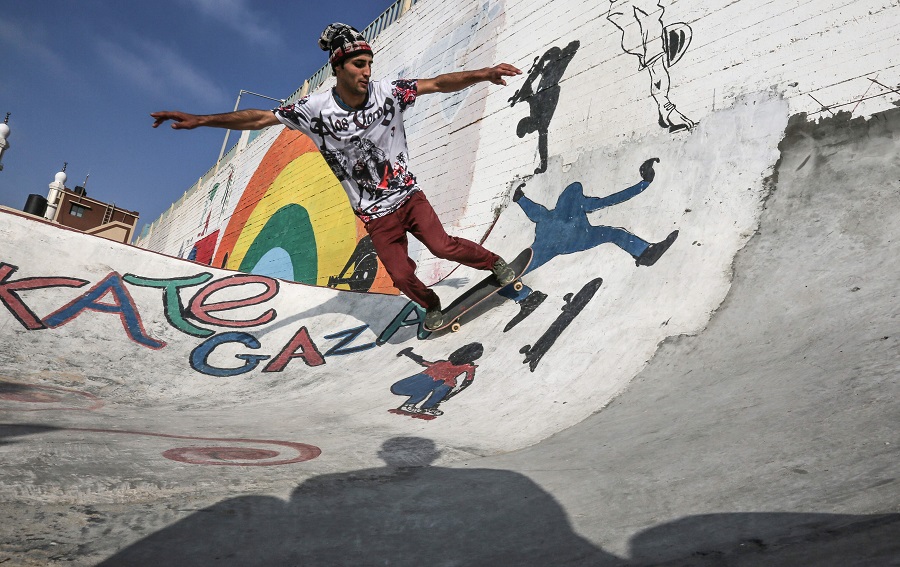
The youth use skateboarding to have fun in Gaza. (AFP)
Skateboarding is also growing in the Israeli-occupied West Bank, the other major part of the Palestinian territories, with a number of parks built with the support of SkatePal, a UK-based NGO.
But Gaza is largely cut off from the outside world, with Israel maintaining a blockade on the strip for more than a decade.
Egypt’s border had also been mainly closed in recent years, though it reopened a year ago and has remained so most of the time since.
Israel says that the blockade is necessary to isolate Gaza’s Islamist rulers Hamas, with whom the Jewish state has fought three wars, and stop it from obtaining weapons or materials to make them.
Critics say it amounts to collective punishment for Gaza’s two million residents.
Reefi said that even getting skateboards into the strip was tough, often resulting in two or three people having to share the same board.
They rely heavily on YouTube videos to learn new tricks.
Gaza has also become more conservative since Hamas seized control in 2007 and many supposedly Western pursuits are banned or frowned upon.
To build the park, which was completed in January, the Italian Cultural Center in Gaza jumped through Israeli administrative hoops to be able to bring in a few dozen skaters a year.
On each visit they stayed several weeks, building the park and also training young people.
“The coordination needed to get 30 people through Erez (Israeli checkpoint) is not easy, with all their applications etc.,” Sami Abu Omar, from the cultural center, said.
Andre Lucat, an Italian who was part of a group which visited Gaza in January, said they worked all hours finishing the park.
He said that they were shocked by the conditions under which Palestinians in Gaza live and wanted to bring a bit of joy to the young people.
“(Skateboarding) can allow them to live children’s lives, even for only a little bit. That’s the most important lesson I learned over there.”
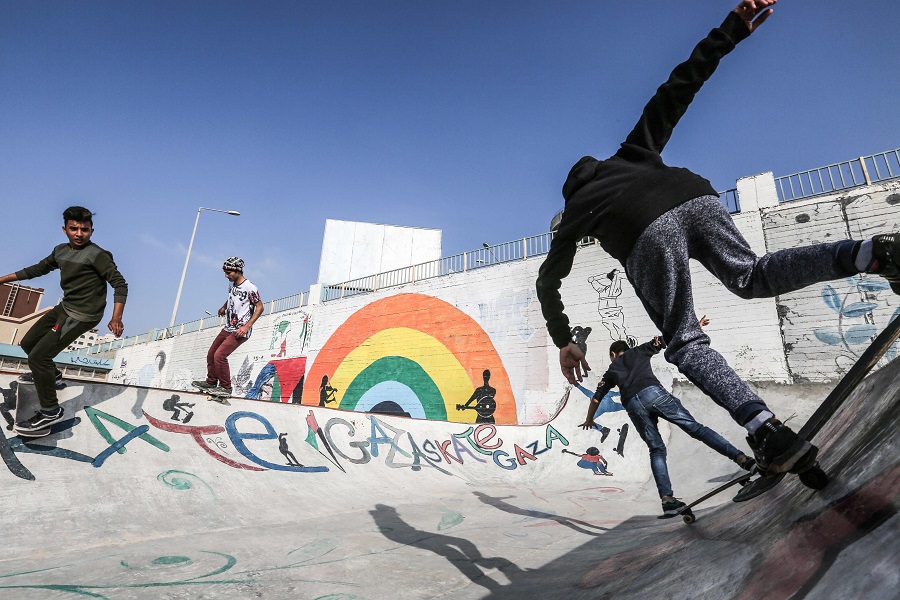
The skate team is currently male only. (AFP)
Yasser Massoud, 13, sold tea and coffee along Gaza’s seafront for a few dollars a day until, one day, by chance he heard the skateboards rattling by.
He clambered down to join in and hasn’t looked back since.
More than a year later, his family allowed him to stop working to focus on studies, and he now spends most of his free time at the park.
“I used to come down every day and play a bit and then it became more and more,” he said. “But my dream is to leave Gaza.”
A group of women in hijab Muslim head coverings leaned over a barrier from a nearby road to watch.
Conservative attitudes mean that the skate team is male only.
“Till now there are no girls but we try because we all should have the same life — not merely me living and having fun and the girls not,” Reefi told AFP.
“But (it should be) in the right way that we were raised with.”
Lucat said that Hamas authorities had at times been skeptical of the project, seeing skateboarding as a Western concept, though such concerns have apparently eased.
The park, Reefi pointed out, is busiest on Friday afternoons when people are off school and work.
It provides bored young men an alternative to joining the weekly Hamas-backed protests along the Israeli border fence.
At least 265 Gazans have been killed by Israeli forces since the protests and clashes began in March 2018. Two Israeli soldiers have been killed over the same period.
Ezzedine Mashharawi, another underemployed member of the team, told AFP that skating was his only release.
“Here in Gaza you have a blockade, a lack of work — psychological pressures on young people,” said the 24-year-old.
“We get rid of all that negative energy through skateboarding.”




